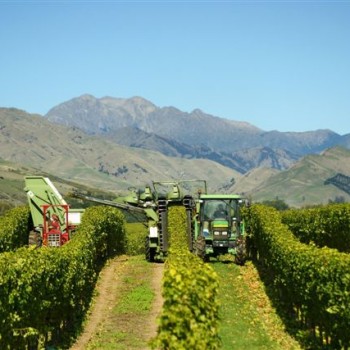ShelfLife Tasting: Pricing the Pinots

Helen Coburn outlines her pick of the best pinots from both Old World and New World producers
14 April 2015
There was a time when pinot noir was almost universally expensive, with most of it coming from Burgundy, in France. No longer. Burgundy is still the great benchmark and its wines still dominate the Livex Fine Wine Index, as it tracks the prices paid for top bottles by the world’s wine connoisseurs and investors. But over the past 15 years, pinot noir has been brought virtually to the masses by New World producers, particularly Chile, New Zealand and Argentina.
All three countries, along with the USA and Australia, produce fine pinots which they hope will rival the Burgundian classics. For top bottles, New World producers will seek out areas like Central Otago in New Zealand, or in the US, the cooler parts of California or Oregon. For these wines, prices are often high. But New World regions with just a little more warmth – New Zealand’s Marlborough, for example, or Aconcagua in Chile – have proved ideal for the production of slightly less austere styles, full of lively summer fruits, which appeal to those in search of less serious drinking. And for lots of these wines, the price is right.
Pinot noir is a tricky grape to get right. If it’s even somewhat over cropped, wine quality can go down very quickly. In cool climates, some vintages can suffer from late frosts or too little sunshine, leading to harsh tannins and green fruit flavours in the wine. In warmer regions, ripening is less of a problem, while greater land availability in the New World means that crop volume can be readily increased, not due to the taking of more grapes from each vine, but through vineyard expansion. For example, in Chile, the acreage under pinot has increased by almost 10 times in the last two years. New Zealand has increased its exports of pinot by almost 150% since the mid-noughties.
More affordable
This has made pinot noir a lot more affordable and easy drinking bottles now start at around €10. At €12-€16, the consumer has a wealth of choice and can even find wines from cooler regions with real classic appeal. Some producers, especially in New Zealand, now release their top cuvees at prices which match Burgundy. Not all deliver on the money. Make use of trade tastings to uncover the best. Even if your taste runs to grippier Burgundian styles, it’s still possible to get a fine New World example for under €35.
Not that New World pinot should invariably be compared with Burgundy. It’s got its own expressions, the most universal being conspicuously well defined summer fruits on nose and palate, with noticeable strawberry and fruit of the forest notes. You’ll find this in Burgundy, too, but generally with a tad less generosity, and a little more by way of redcurrant notes and dry tannins. Pinot noir is not deeply coloured; a very dark hue may mean that a proportion of another grape variety has been blended in. This is legal in many non-EU regions. Pinot noir can run to alcohol in warmer climates. In Burgundy it will generally be around 13% or just a little over; in the New World it has no problem getting to 14.5% or even 15%.
The following is a list of pinots which offer good value for money:
Trapiche Pinot Noir Argentina 2011 (Comans, Wineonline €14). Elegant, smooth summer and plum fruits; good with red meats and cheese.
Salentein Uco Mendoza Pinot Noir Argentina 2011 (Celtic Whiskey, Nolans Clontarf, McCabes, Gibneys €17). Sprightly cherry and plum fruit which lingers nicely on the palate; great with lamb and duck.
Carmen Reserva Pinot Noir Chile 2011 (Tesco, O’Briens €14). Nicely balanced and structures; very good with lamb.
Cono Sur Bicicleta Pinot Noir Chile 2012 (Tesco, other multiples €12). Great value with lots of tasty strawberry soaked summer fruits.
Windy Peak Pinot Noir Yarra Australia 2013 (Febvre, Wineonline, independents €18). Slightly dry plum and summer fruits with nicely balanced tannins and acidity.
Domaine Mongeard Mugneret Sauvigny les Beaune Burgundy 2011(Liberty Wines, independents €40) Nicely concentrated and balanced summer fruits, but expensive.
Montes Alpha Aconcagua Pinot Noir Chile 2013 (Liberty Wines, independents €20). Light style but the well defined fruit palate comes at a fair price.
De Loach Russian River Pinot Noir 2012 (Liberty Wines, independents €26). Elegant yet tasty bottle from one of California’s premium AVA designations. Delivers now on price, but the euro exchange rate is bound to make this more expensive.
Wild Earth Central Otago New Zealand Pinot 2010 (Liberty Wines, independents €26). Very good, with firm acidity and tannins supporting decently concentrated plum and summer fruits.
Black Cottage Pinot Central Otago New Zealand 2012 (Redmonds, Donnybrook Fair, other independents €22). There’s a subtle savoury note running through this well structured plummy wine; try with duck.
Nautilus Marlborough Pinot Noir New Zealand 2010 (Cassidy, McCabes, Corkscrew, other independents €27). This treat isn’t cheap but it would make a splendid companion to an Easter lamb dish.
St Helena Vernus Pinot Noir Chile 2013 (Spar/Mace €15). Quite complex for its price, with approachable flavours balanced by decent tannins; just watch out for that 15% alcohol, almost disguised by the well concentrated fruit.
Vina Leyda Cahuil Pinot Noir Chile 2013 (Dunnes Stores €19). Delivers well on price and should please Burgundy lovers, with its elegant fruits and firm tannins.



 Print
Print





Fans 0
Followers